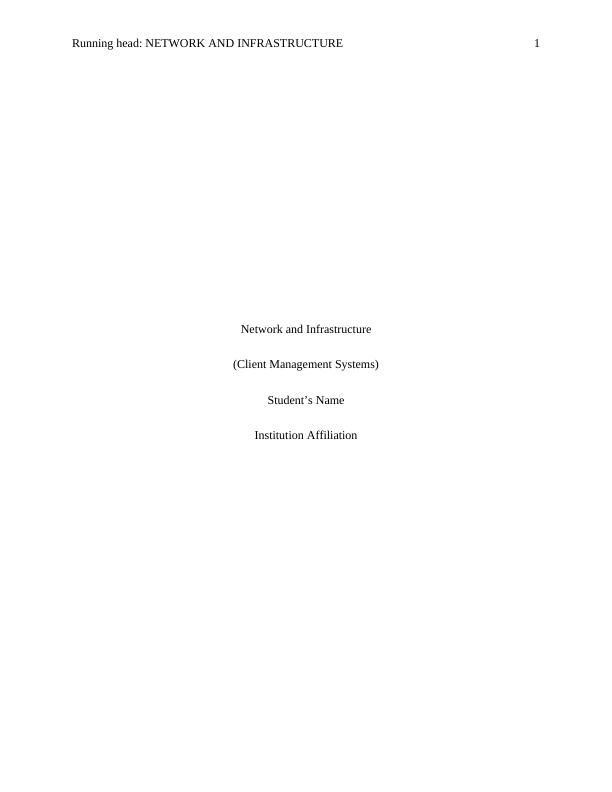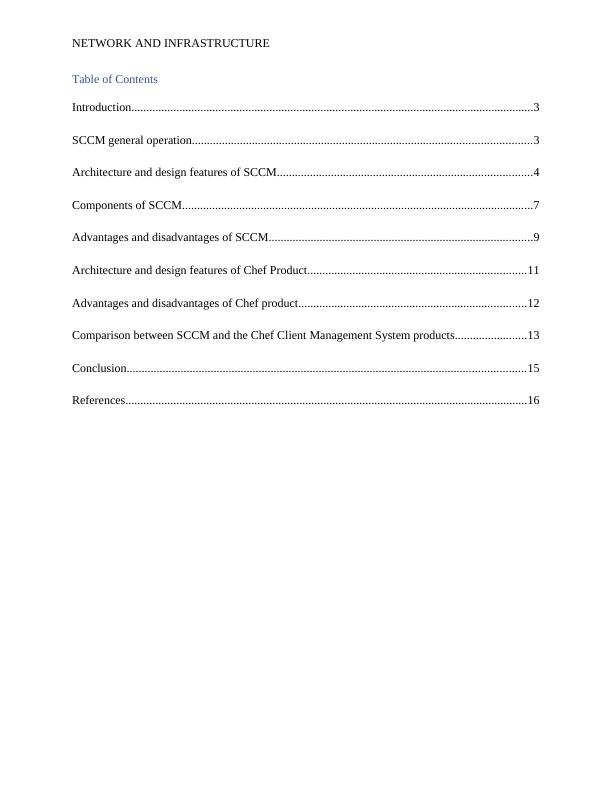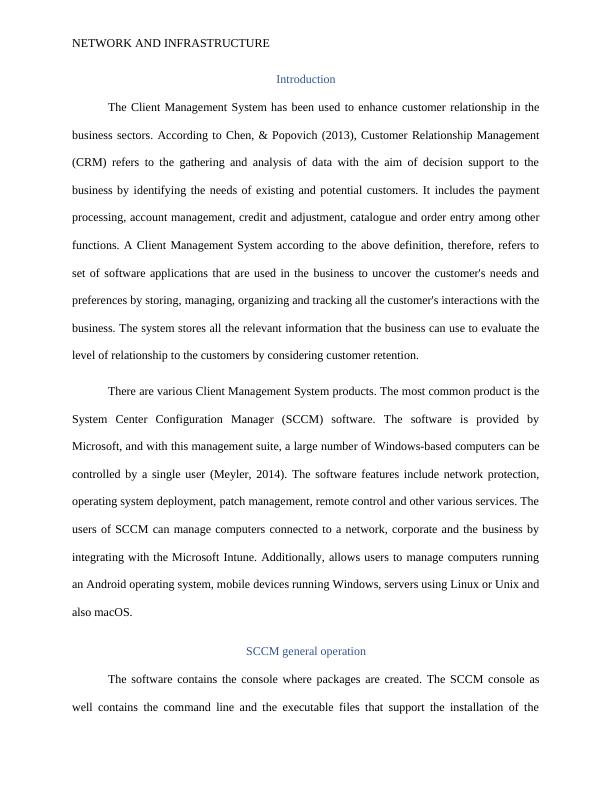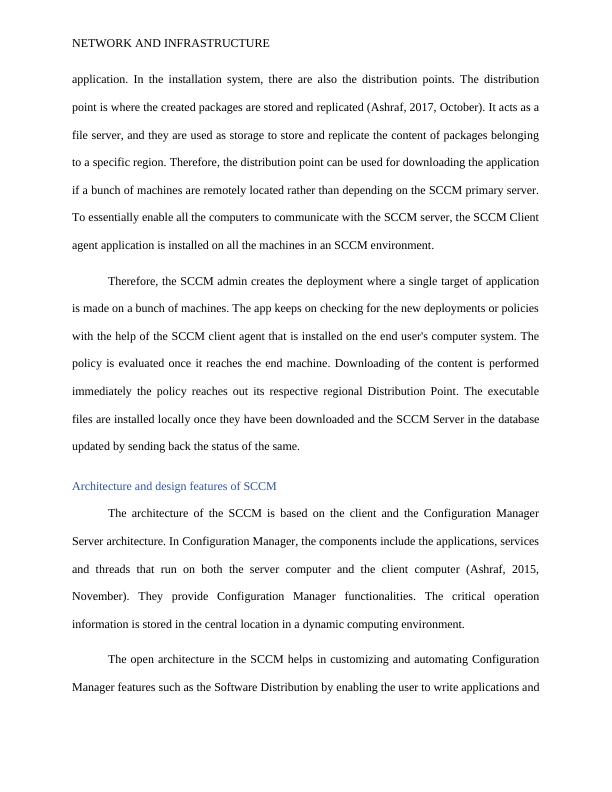Network and Infrastructure (Client Management Systems)
Client management system advantages and disadvantages, and a summary of an article on GHG reporting and impression management.
18 Pages4277 Words238 Views
Added on 2023-06-04
About This Document
This article discusses Client Management Systems like SCCM and Chef, their architecture, components, advantages, and disadvantages. It also compares SCCM and Chef for infrastructure management.
Network and Infrastructure (Client Management Systems)
Client management system advantages and disadvantages, and a summary of an article on GHG reporting and impression management.
Added on 2023-06-04
ShareRelated Documents
End of preview
Want to access all the pages? Upload your documents or become a member.
Administering System Center Configuration Manager and Intune - Desklib
|21
|4717
|72
Features And Capabilities of Configuration Management Tools
|10
|2284
|33
System Center Configuration Manager (SCCM)
|5
|884
|178
Windows Server 2016 Deployment: WMW Company
|10
|2083
|486
Implementing a Distributed File Storage System using Windows Server 2012
|28
|1898
|252
Ansible as a Network Programming and Automation Tool
|10
|3257
|68




